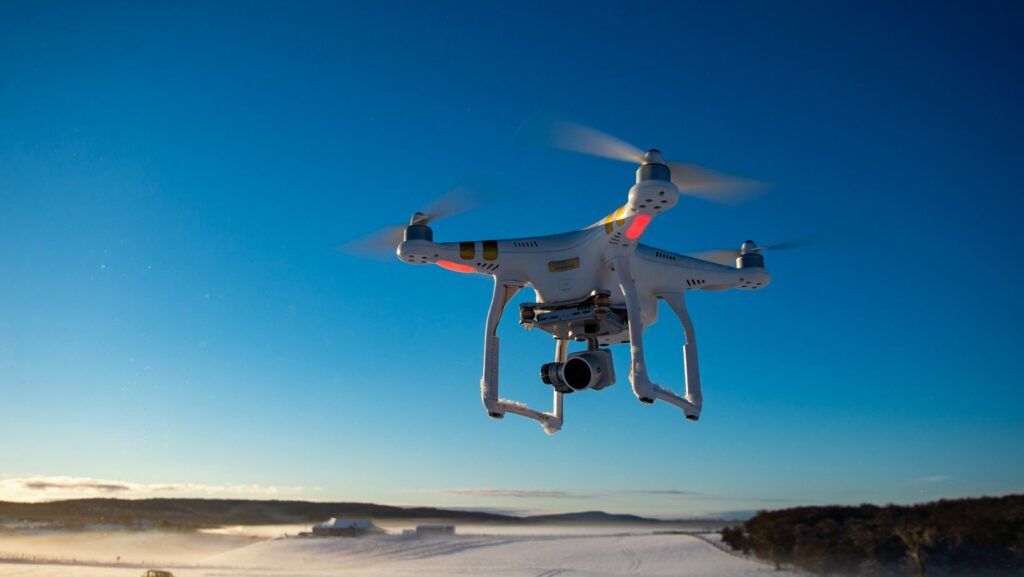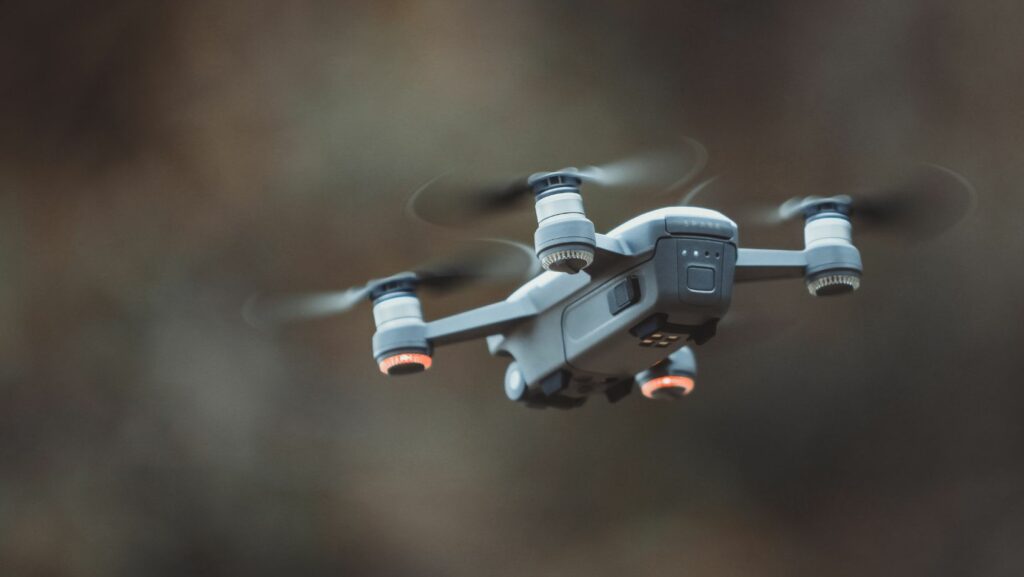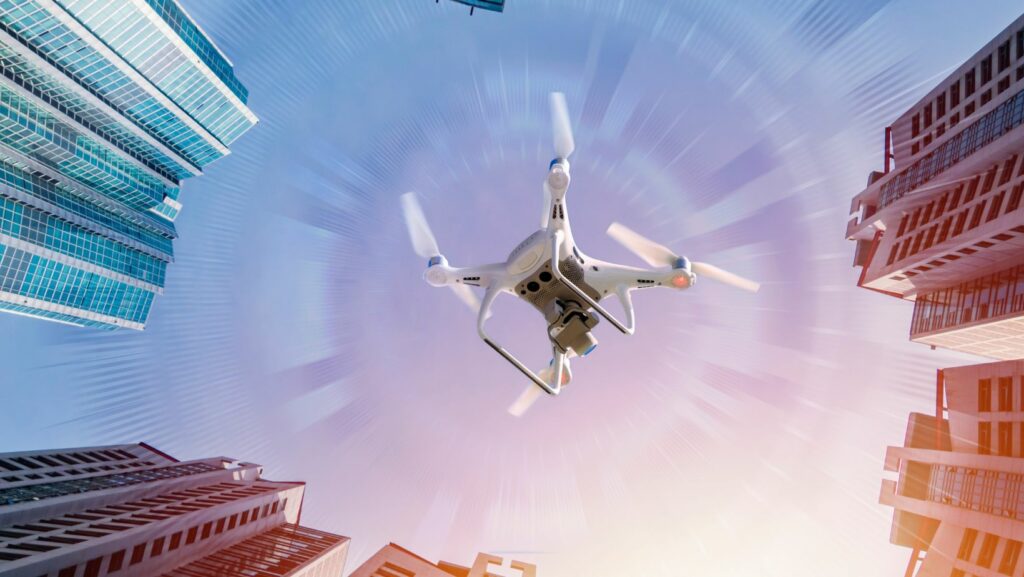Tips For Safely Flying A Drone

Check Local Laws and Regulations
Before you take your drone out for a spin, be sure to check local laws and regulations. Depending on your location, there may be restrictions on where you can fly and how high you can fly. Knowing the rules before you fly will help you avoid costly fines and keep you and your drone safe.
Before You Fly, Check the FAA’s UAS Map
The FAA’s UAS (drone) Map shows the areas where flying a drone is restricted.
-Enter an address to find out if there are any restrictions in that area.
-Zoom in to see more detail, or zoom out to get a bird’s eye view.
If you’re flying for fun, you don’t need to register your drone with the FAA.
-However, if you’re flying for commercial purposes, you must register your drone with the FAA.
-You can register your drone online or by mail.
Know the Difference Between a Drone and a Model Aircraft
Drones, or unmanned aircraft systems (UAS), are aircrafts piloted remotely by a ground control operator, whereas model aircraft are flight-capable devices that are controlled by the user. Drones typically weigh less than 55 pounds, though some UAS can weigh up to 155 pounds.
The term “drone” generally refers to UAS that are capable of carrying payloads, such as cameras or other sensors, for commercial or military purposes. Model aircraft, on the other hand, are flown primarily for recreational purposes.

When flying a drone, it is important to be aware of both federal and state regulations. In the United States, the Federal Aviation Administration (FAA) is responsible for regulating all airspace. This includes regulating the use of drones and model aircraft.
Some states have additional laws and regulations regarding the use of drones and model aircraft. For example, California requires all drone operators to register their drones with the state’s Department of Motor Vehicles. Additionally, some cities and counties have enacted their own ordinances regarding the use of drones and model aircraft. For example, the city of Los Angeles has a ban on flying drones within five miles of an airport.
Choose the Right Drone
Drones have become increasingly popular in recent years, but there are still many people who are not familiar with them. When choosing a drone, there are a few things you should keep in mind. First, you need to decide what you want to use the drone for. There are many different types of drones available on the market, so you need to make sure you choose one that is suited for your needs. Second, you need to make sure the drone you choose is safe.
Consider the Purpose of Your Flight
Most people fly drones for fun and to capture beautiful photos and videos. But before you can start flying, you need to understand the rules and regulations. Here are a few things to consider before your first flight.
The first thing you need to do is figure out the purpose of your flight. Are you flying for fun or do you have a specific task in mind? If you’re just flying for fun, then you don’t need to worry about getting a permit or following specific regulations. But if you’re flying for work or another commercial purpose, then you’ll need to get a permit and follow some stricter rules.
Once you know the purpose of your flight, you can start thinking about where you’ll be flying. You might want to stay close to home at first, but eventually, you’ll want to venture out into more open areas. Just be sure to check the local regulations before flying in any new area.
Consider the Size and Weight of Your Drone
The size and weight of your drone will impact how safe it is to fly. If you are flying a large drone, it will be more difficult to control and could cause more damage if it crashes. Smaller drones are more likely to be affected by wind and weather conditions, so you should consider these factors when choosing a drone.
Consider the Features of Your Drone
When choosing a drone, consider the features that are important to you. If you want to take aerial photos and videos, look for a drone with a camera. For longer flight times, choose a drone with a larger battery. If you plan to fly in windy conditions, look for a drone that is stable in the air.
Here are some other features to consider:
– GPS: A drone with GPS will be able to keep track of its location and return home if it gets lost.
– Flight modes: Some drones have different flight modes (such as normal and sport) that you can switch between.
– Obstacle avoidance: This is a feature that will help your drone avoid objects in its path.
– Headless mode: This is a feature that allows you to control the drone without having to worry about its orientation.
Prepare to Fly
When you’re ready to take your drone out for a spin, there are a few things you should always do to prepare. Check the area you’re planning to fly in for any hazards, and make sure you have the proper permissions if you’re flying in a restricted area. If you’re flying at night, there are a few extra safety measures you should take.
Choose a Safe Flying Location
When you’re looking for a safe place to fly your drone, there are a few things you should keep in mind. First, make sure the area is well lit, both during the day and at night. If you’re flying at night, you’ll need to be especially careful to avoid obstacles. You should also make sure the area is clear of people and animals.
Second, avoid flying near airports or other areas where there is air traffic. If you must fly near an airport, be sure to contact the airport beforehand to get permission.
Third, be aware of the weather conditions in the area you’ll be flying in. Avoid flying in high winds or in thunderstorms. If you do end up flying in bad weather, be sure to stay close to the ground and avoid any tall objects that could blow into your path.

Finally, make sure you have a good understanding of the drone laws in your country or state before taking off. Each area has different regulations that you need to follow to stay legal.Flying a drone can be a fun and exciting experience, but it’s important to remember to do it safely. By following these tips, you can help ensure a safe and enjoyable flight for everyone involved
Inspect Your Drone
Before each flight, thoroughly inspect your drone, paying special attention to the propellers. If any of the blades are bent or damaged, don’t try to fly the drone. Also, check to make sure that all of the connections are tight and secure.
Charge the Batteries
Before each flight, it is extremely important to check that your drone and remote control batteries are fully charged. Depending on the model of drone, you may have one battery for the drone and a separate battery for the remote. Make sure to check both! If you are flying a drone with a built-in camera, also remember to check that your SD card has enough space to store all of the footage you plan on taking.
Fly Your Drone
While the FAA’s rules are pretty straightforward, there are a few things you should know before flying your drone. Here are a few tips to help you stay safe while flying your drone.
Take Off and Landing
Most drones will have an automated take-off and landing feature, which is great for beginners. Before taking off, ensure that you are in an open area away from obstacles like trees, power lines, and people. Take-off and landing can be tricky so it’s important to be extra careful during these times.
Once your drone is in the air, you can begin flying it using the joysticks on the remote control. The left joystick controls the throttle (up and down) and the yaw (left and right), while the right joystick controls the pitch (forward and backward) and the roll (side to side). For most drones, pushing both joysticks away from each other will make the drone go up, while pulling them towards each other will make it go down. To turn left or right, simply push one joystick in the desired direction.
To land your drone, slowly lower the throttle until the drone is hovering a few feet off the ground. Then, push both joysticks towards each other to lower it down gently. Once your drone’s landinggear touches the ground, let go of theJoysticksto complete the process.
Flying Maneuvers
There are a few basic flying maneuvers that every drone pilot should know. These will help you keep your drone under control and avoid any accidents.
-Hover: This is the most basic maneuver. To hover, simply hold the drone in one spot in the air. You may need to adjust the throttle to keep the drone at a consistent altitude.
-Forward/backward: To move the drone forward or backward, simply tilt the stick in the corresponding direction. The further you tilt the stick, the faster the drone will move.
-Left/right: To move the drone left or right, tilt the stick in the corresponding direction. Again, the further you tilt the stick, the faster the drone will move.
-Turning: To turn the drone, simply push one of the joysticks to one side or another. The further you push it, the sharper the turn will be.
-ascending/descending: To make your drone go up or down, simply adjust the throttle. The higher you set it, To make your drone go up or down, simply adjust If you want to fly your drones at night then you must have knowledge about Night Flying Drones (keyword).
After the Flight
Check your local laws and regulations before flying your drone. Be sure to stay well below 400 feet and keep your drone within visual line of sight. Don’t fly near people or stadiums.
Check the Weather
Before you even think about taking your drone out for a spin, you need to check the local weather conditions. The last thing you want is to get caught in a storm or high winds while flying. You can check the weather forecast on your phone or computer, or even better, there are now apps specifically for drone pilots that will give you up-to-date information on conditions in your area.
Download the Flight Data
Once you’ve landed, the first thing you should do is download the flight data from your drone. This will give you a chance to review the footage and make sure everything went as planned. It will also give you a chance to debrief with your team and discuss any areas that need improvement.
The flight data will also come in handy if something went wrong during the flight. If you need to file a report or make an insurance claim, having the data will be invaluable.
Inspect Your Drone
Before every flight, you should inspect your drone to make sure that everything is in working order. This includes checking the propellers, batteries, motors, and other essential parts. If you notice any damage or wear, replace the part before flying. It’s also a good idea to check for firmware updates to ensure that you have the latest and greatest software for your drone.
Can You Fly a Drone at Night
Currently, the U.S. Federal Aviation Administration (FAA) does not allow recreational drones to be flown at night. This is because flying a drone at night can pose significant risks to both the drone operator and people on the ground.
While it may be tempting to fly your drone at night in order to get some great photos or videos, it is important to remember that doing so can be extremely dangerous. If you are caught flying your drone at night, you could face serious penalties from the FAA, including fines and even jail time.
Flying a drone at night is also risky because it is much more difficult to see obstacles and avoid them. This can lead to accidents which could cause serious injury or damage to property. If you do decide to fly your drone at night, be sure to take extra precautions and follow all safety regulations.
Federal Aviation Regulations
The Federal Aviation Administration (FAA) has strict rules and regulations surrounding the use of drones, especially when it comes to flying them at night. According to the FAA, you must have a “spotter” who can keep an eye on the drone at all times while it is in the air, and you are not allowed to fly the drone above people or cars. In addition, you must keep the drone within your line of sight at all times, which can be difficult to do at night.


